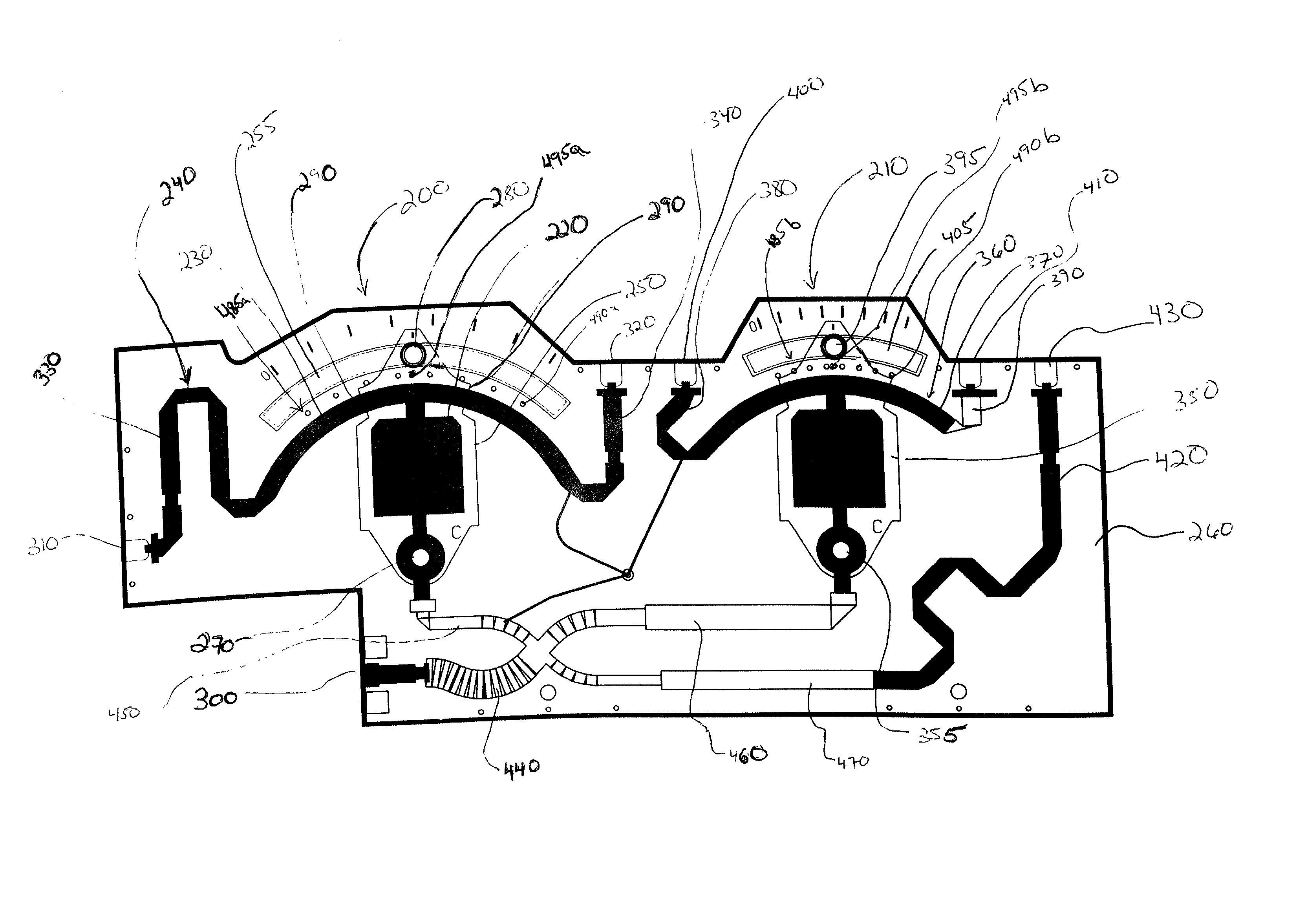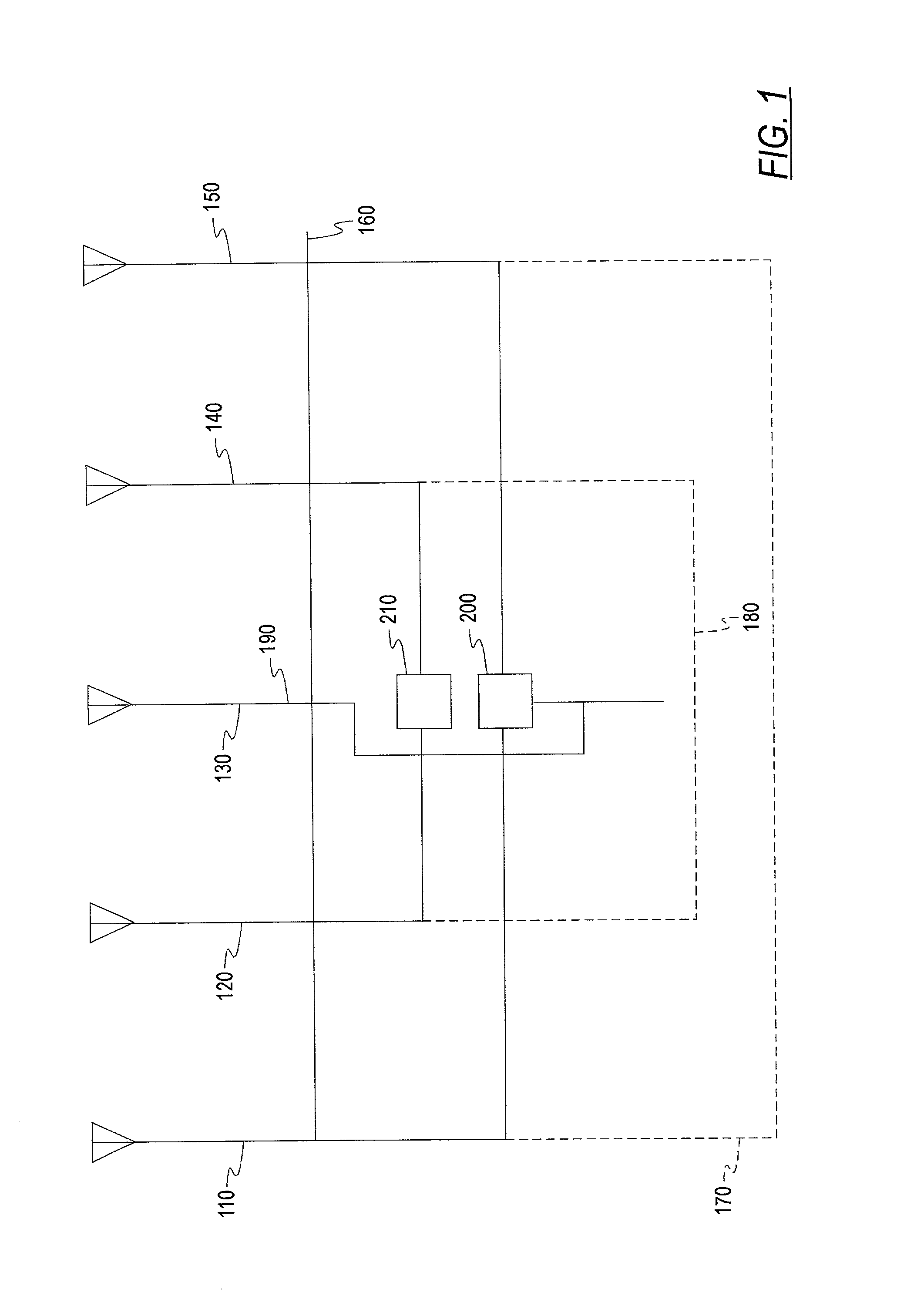Cellular base station antenna
a technology of antenna assembly and cell base station, which is applied in the direction of individual energised antenna array, antenna equipment with additional functions, transmission, etc., can solve the problems of affecting the mechanical antenna mount, affecting the performance of the antenna, and affecting the operation of the antenna
- Summary
- Abstract
- Description
- Claims
- Application Information
AI Technical Summary
Problems solved by technology
Method used
Image
Examples
Embodiment Construction
[0022] An antenna assembly for emitting a signal includes at least two antennas divided into two groups. A first phase adjuster is coupled to the first antenna group, and are adapted to adjust a phase angle of the first group. A second phase adjuster is coupled to the second antenna group. The second phase adjuster is adapted to adjust a phase angle of the second group. Also coupled to the second phase adjuster is the first phase adjuster, such that an adjustment of the first phase adjuster causes an adjustment of the second phase adjuster.
[0023] FIG. 1 is a side view of an antenna assembly 100 of the present invention. The antenna assembly 100 is comprised of a plurality of antennas 110, 120, 130, 140, 150 disposed along a panel 160. The antennas 110, 120, 130, 140, 150 are grouped into a first group 170, a second group 180, and a third group 190. The first antenna 110 and the fifth antenna 150 are in the first group 170. The second antenna 120 and the fourth antenna 140 are in the...
PUM
 Login to View More
Login to View More Abstract
Description
Claims
Application Information
 Login to View More
Login to View More - R&D
- Intellectual Property
- Life Sciences
- Materials
- Tech Scout
- Unparalleled Data Quality
- Higher Quality Content
- 60% Fewer Hallucinations
Browse by: Latest US Patents, China's latest patents, Technical Efficacy Thesaurus, Application Domain, Technology Topic, Popular Technical Reports.
© 2025 PatSnap. All rights reserved.Legal|Privacy policy|Modern Slavery Act Transparency Statement|Sitemap|About US| Contact US: help@patsnap.com



